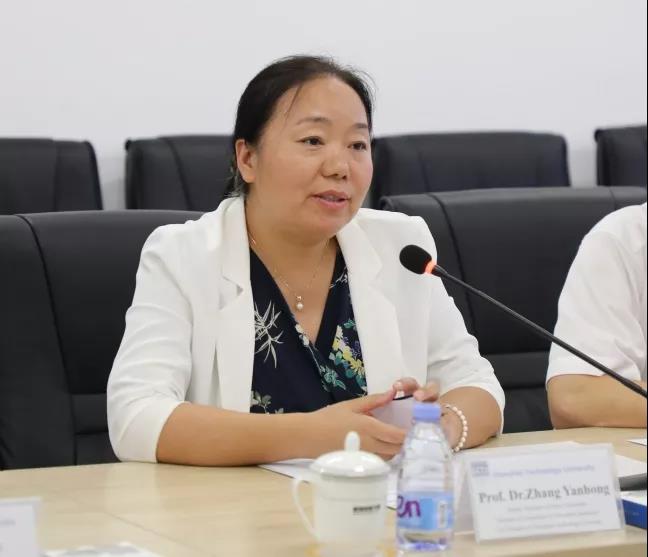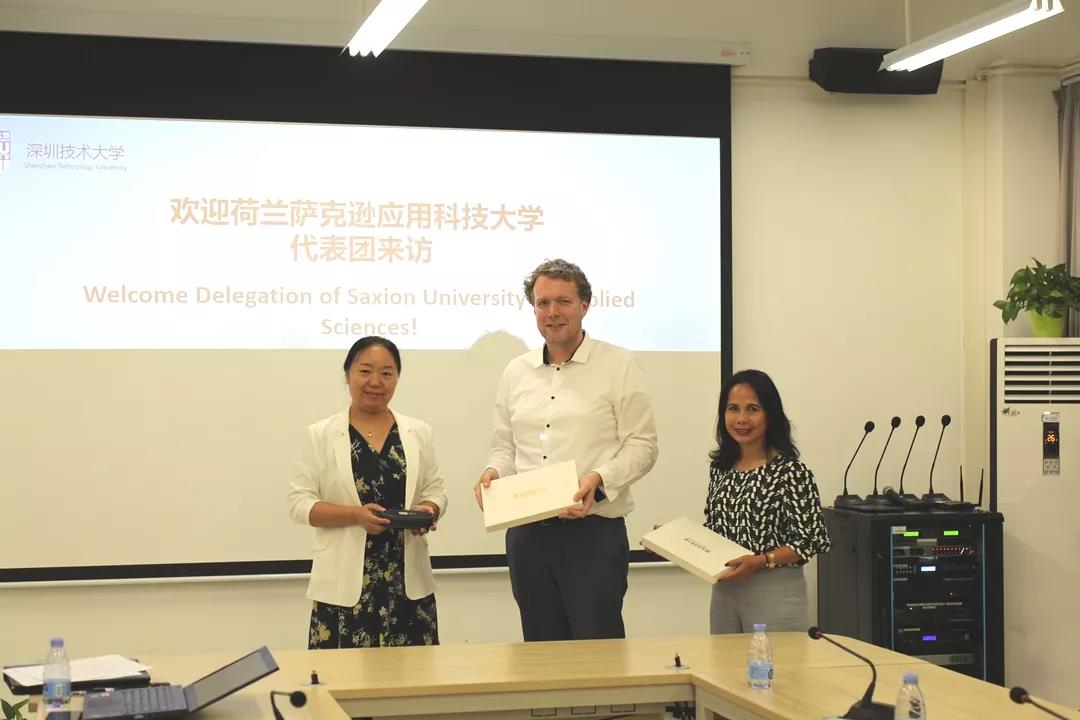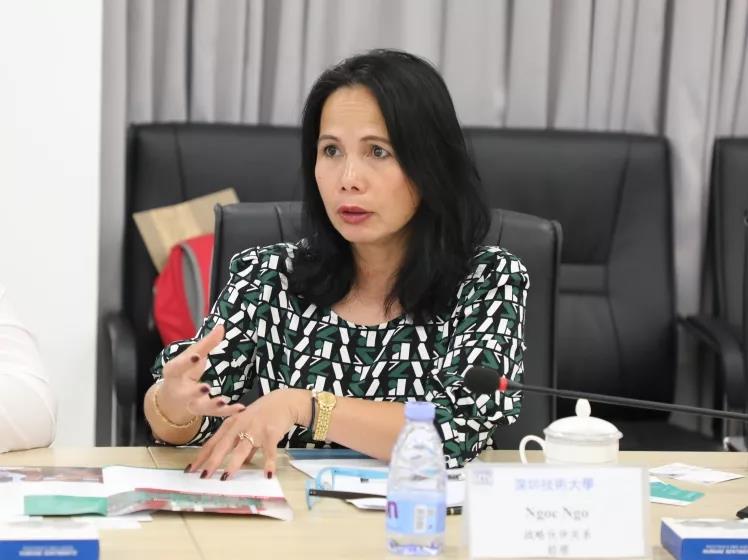Janco Bonnink, Director of Department of Education and Student Support at Saxion University of Applied Sciences, and Ngoc Ngo, Strategic Partnership Manager, visited Shenzhen Technology University (SZTU) on September 12. It was the first time that the delegation of Saxon University of Applied Sciences paid a visit to SZTU. On behalf of SZTU, Prof. Dr. Zhang Yanhong, deputy secretary of the Party Committee and secretary of Committee for Discipline Inspection, warmly welcomed two Dutch visitors.
Prof. Zhang Yanhong made an introduction to SZTU on the school infrastructure, the establishment of different colleges, international exchanges and university-enterprise cooperation. She said that SZTU has always attached great importance to international cooperation with world-class universities of applied sciences in Europe in various areas such as academic exchanges, laboratory construction, and joint training of students. She believes that the delegation of Saxion University of Applied Sciences will promote the communication between universities in China and the Netherlands.


On behalf of SZTU, Prof. Zhang Yanhong welcomes the delegation of Saxion University of Applied Sciences. [Photo by SZTU Publicity Office]
Janco Bonnink appreciated the rapid development of infrastructure and discipline construction at SZTU. He said Saxion University of Applied Sciences has embedded the process of internationalization in its strategic plans for the coming decade. Saxion keeps striving to be an internationally recognized institution of higher education with innovative technology. In the areas of both professional education and applied research, Saxion collaborates with companies, institutions and governmental organizations to create strong practical links between the key issues and latest developments in the professional and educational arenas.

Janco Bonnink appreciates the rapid development of SZTU. [Photo by SZTU Publicity Office]
Ngoc Ngo then gave a detailed introduction to Saxion University of Applied Sciences. Saxion now has more than 27,000 students, more than 2,200 faculty members, and 13 colleges. In order to provide international students with more choices, Saxion offers more than 30 programs in English.

Ngoc Ngo gives a detailed introduction to Saxion University of Applied Sciences. [Photo by SZTU Publicity Office]
The attendees of SZTU include Liu Liwen, LIU Liwen, head of Human Resources Office, Prof. Dr. CHEN Lingling, deputy dean of College of Health Science and Environmental Engineering, Prof. Dr. Julian Chan, distinguished professor and international affairs officer from Sino-German College of Intelligent Manufacturing, Liang Lixin, international affairs officer from College of Big Data and Internet, Xu Qianghua, university-enterprise cooperation officer from College of Big Data and Internet, Su Yaorong, international affairs officer from College of New Materials and New Energies, Hu Jingxuan, international affairs officer from College of Creative Design, and Zhang Shupeng, associate professor from College of Urban Transportation and Logistics. They had in-depth discussions with Janco Bonnink and Ngoc Ngo, and hope that SZTU will promote substantive cooperation with Saxion University of Applied Sciences in various fields in the future.

Professors from different colleges hopes to have substantive cooperation with Saxion University of Applied Sciences. [Photo by SZTU Publicity Office]
Tips: (Some information below is cited from the official website of Saxion University of Applied Sciences.)
Saxion University of Applied Sciences is one of the largest institutions of higher education in the Netherlands, with close to 27,000 students. Saxion has a rich history - its roots can be traced back to 1875. A merger of two educational institutions, the Hogeschool Enschede and Hogeschool IJselland, paved the way for Saxion University of Applied Sciences in its present form in 1998.
